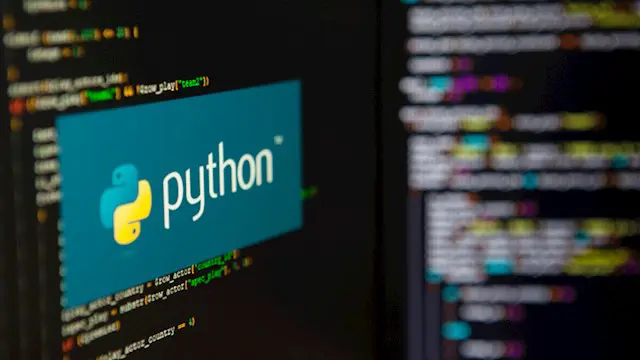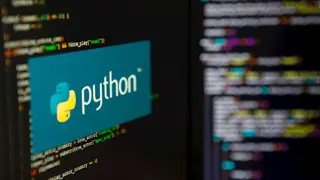
Automation Online Training
Free eCertificate | Tutor Support | Video Lessons
Frontier Education
Summary
- Reed courses certificate of completion - Free
- Tutor is available to students
Add to basket or enquire
Overview
This Automation course enables you to delve deeply into Automation, to better explore, understand and apply relevant skills.
Through this Automation course, you will gain a world-class knowledge and understanding with a focus on Automation, based on solving real-life issues.
This Automationcourse includes a whole host of practical tips and advice, helping you to develop yourAutomationskillsto become the automotive engineer, automotive technician, automation manager, automation personnel services, automation test engineer,or related professionyou can be.
This is two courses bundle and they are:
Course 1: AWS Automation with boto3 of Python and Lambda Functions
Course 2: Python Scripting for Automation
Packed with videos, PDFs and exercises, it'll equip you with what it takes to be successfulin today’s business landscape, covering a broad range of topics, including automation to implementation, working with sets, usage of meta object, i am roles to execute python and much more.
Frontier Education provides those with no previous experience or working professionals with trailblazing, practice-based teaching, aimed to inspire and prepare you for a career relevant industry .
Curriculum
-
Introduction to Environment Setup 1:19:52
-
Boto3 Automation to Implemetation 34:13
-
Working with STS 06:01
-
EC" Part 33:48
-
EC2 Waiters 21:15
-
Usage of Meta Object 05:53
-
EC2 Collection 30:34
-
EC2 part 2 with practice 42:36
-
IAM roles to execute python 05:54
-
Exception Handling 14:40
-
Working with IAM User 38:28
-
Lamda part 1 3:25:05
-
Paginotors of Boto3 25:40
-
Working with S3 54:03
-
Lamda part 3 19:17
-
Introduction 1:01:10
-
Basics of identfication 49:47
-
Basics of data types and variable 1:00:32
-
Complete String Operation 1:13:04
-
Data Structure with operation 1:09:28
-
Operation of python 56:21
-
Conditional Statements 1:15:00
-
Working with python modules 57:19
-
sys module 30:12
-
Os Module 1:42:51
-
Loops 2:43:23
-
Datetime module 33:28
-
Subprocess module 56:34
-
Working with text files 42:12
-
Working with csv 39:48
-
Working with file like json 12:53
-
Exception Handling 50:58
-
Functions 2:27:06
-
Regular expression with remodule 1:59:59
-
Paramika module 34:09
-
Shutil module 17:04
-
OOPS for real time 2:07:57
Course media
Description
In this Automation course, you will learn and understand the core theories and practices in Automation, developing a solid base of knowledge. You will understand core Automation theories and practices and be able to think critically, actively contributing towards the body of knowledge in the industry and pushing the boundaries with Automation skills.
With expert guidance and a combination of videos, PDFs, and worksheets, this course is designed to prepare you for a career or learning journey.
Course curriculum:
Course 1: AWS Automation with boto3 of Python and Lambda Functions
Course 2: Python Scripting for Automation
You’ll also be able to access a number of exclusive bonus resources to help you along your Automation journey, including:
- paginotor of boto
- working with python modules
- working with cdv
- working with file like json
- paramikos module
Top reasons to Study Online at Frontier Education
- Tailor-made: Course adapted to market needs and interests
- Flexible programs: Study and work at your own pace on easy-to-use web platforms
- Online education: Progressive teaching methods with video or easy to understanding the medium
- Multicultural: Connect with classmates from all corners of the globe
Who is this course for?
This Automation is ideal for people looking to progress their career into an automotive engineer, for those who want to become automotive technicians, as well as looking to further develop their skills and knowledge
Requirements
No prior knowledge or experience required
Questions and answers
Currently there are no Q&As for this course. Be the first to ask a question.
Certificates
Reed courses certificate of completion
Digital certificate - Included
Will be downloadable when all lectures have been completed
Reviews
Currently there are no reviews for this course. Be the first to leave a review.
Legal information
This course is advertised on reed.co.uk by the Course Provider, whose terms and conditions apply. Purchases are made directly from the Course Provider, and as such, content and materials are supplied by the Course Provider directly. Reed is acting as agent and not reseller in relation to this course. Reed's only responsibility is to facilitate your payment for the course. It is your responsibility to review and agree to the Course Provider's terms and conditions and satisfy yourself as to the suitability of the course you intend to purchase. Reed will not have any responsibility for the content of the course and/or associated materials.


